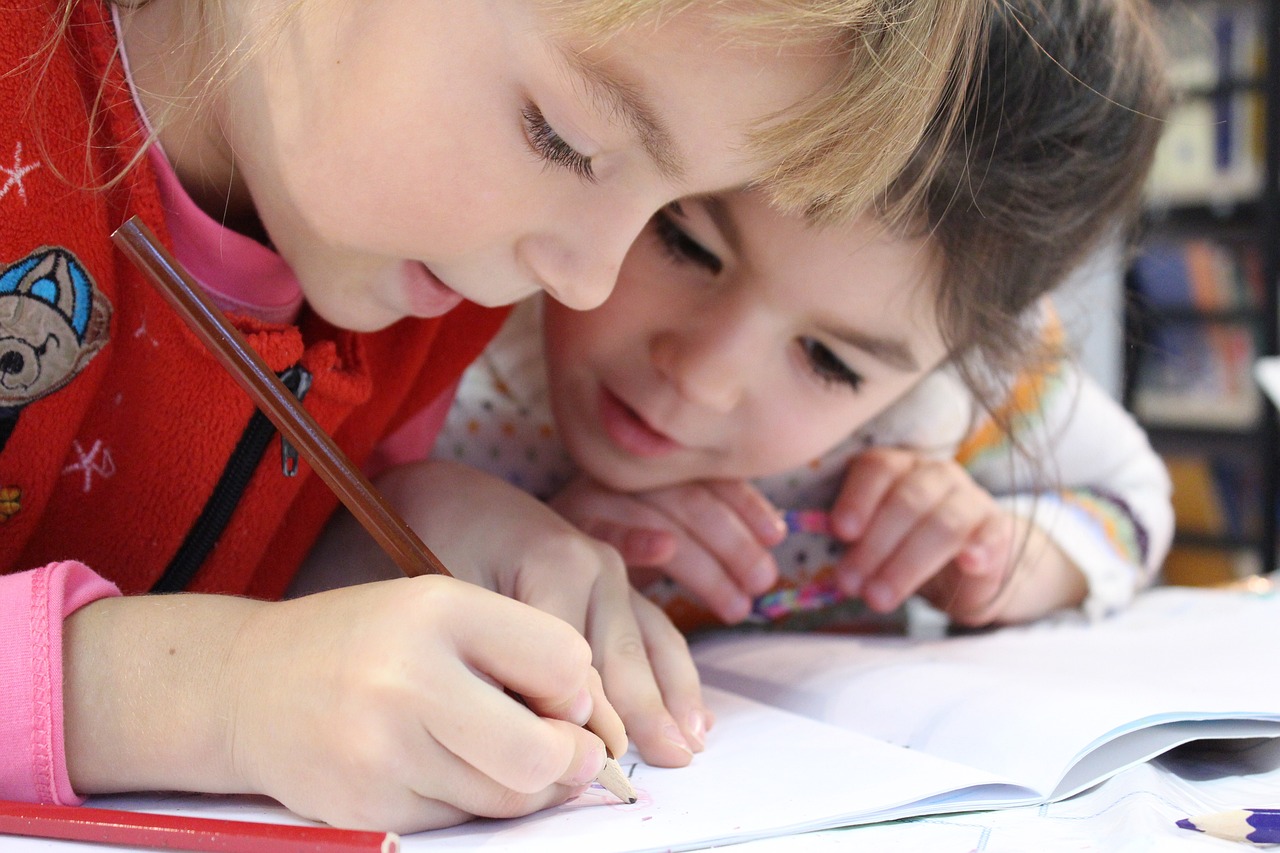When it comes to family engagement in education, the first thing you should know is that it really makes a difference, especially when the students are in middle and high school.
When parents and caregivers actively participate in their children’s academic journeys, it not only enhances the educational experience but also helps students succeed. Seriously, family engagement is a big deal in education – it’s like a cornerstone of effective learning.
So, in this article, we’re going to dive deep into the impact of family engagement practices on a child’s educational development. We’ll explore all the different aspects and highlight the crucial role it plays. Our goal is to show parents and caregivers how they can be active partners in their children’s learning process.
Whether you’re a parent, guardian, educator, or just someone who cares about a child’s learning, this article will give you some valuable perspectives on the importance of family engagement strategies and how we can make it work for our students and communities.
Understanding Family Engagement
When it comes to strengthening the bonds between families, schools, and communities, understanding family engagement is key.
Let’s start by defining family engagement. It’s all about parents and caregivers actively participating in the educational process. This can involve a wide range of activities, from reading with children at home to volunteering at school events.
Now, let’s take a quick look at the historical perspective. Family engagement has come a long way over the years. In the past, parents had a limited role in their children’s education, but things have changed. It’s important to appreciate this transformation and understand the significant role parents and caregivers play in education today.
There are also a few theoretical frameworks that provide valuable insights into family engagement. First, there’s the Ecological Systems Theory by Urie Bronfenbrenner, which emphasizes understanding a child’s environment, including family, school, and community, and how it shapes their development.
Then, there’s the Social Capital Theory, which suggests that networks of relationships provide resources for individuals. In education, family engagement can be seen as a form of social capital, where parents and caregivers connect with educators and the community to support their children’s learning.
Lastly, we have the School-Family-Community Partnership Model, which advocates for collaborative efforts among schools, families, and communities to enhance students’ educational outcomes. It highlights the importance of a joint commitment from all stakeholders for effective family engagement.
By understanding these different aspects of family engagement, we can truly appreciate its multifaceted nature and its potential to positively influence a child’s educational journey.
Benefits of Family Engagement in Education
When families actively engage in education, it brings a whole bunch of benefits that make a big difference for students, parents, and the school community. Let’s break it down:
Academic Achievement
When parents and caregivers get involved in their child’s education, it actually helps them do better academically. They tend to get higher grades, do better on tests, and are more likely to graduate high school and go on to higher education. The support and encouragement from home can really motivate students to excel in their studies.
Improved Behavior
When families are engaged in education, students tend to have better behavior both in and out of the classroom. They show up to school regularly, complete their homework, and have fewer disciplinary issues. This not only benefits the students themselves, but it creates a positive learning environment for the whole class.
Enhanced Social Skills
Family engagement also helps develop students’ social skills. When parents, caregivers, teachers, and students interact in a positive way, it helps build good communication, conflict resolution, and empathy. These social skills are so important for students to work well with others, make friends, and handle different social situations.
Increased Parental Satisfaction
When parents and caregivers actively participate in their child’s education, it makes them happier and more satisfied. They feel more connected to the school and their child’s learning journey, and they’re more informed about what’s going on. This sense of empowerment and fulfillment is really important.
So, when families get involved, it’s a game-changer. It boosts academic success, improves behavior, enhances social skills, and makes parents feel more satisfied. It’s all about creating a positive and thriving educational experience for everyone involved.
Types of Family Engagement
Family engagement in education can take on different forms and happen in various settings. These different types of family engagement give families and schools the flexibility to work together and support students’ learning and development in their own unique ways. Let’s go through them:
Home-Based Engagement
This is all about getting families involved in education within the comfort of their own homes. It could be helping with homework, reading to children, or creating a supportive learning environment at home. We recognize that families are a child’s first and most influential teachers, so home-based engagement aims to strengthen the partnership between home and school.
School-Based Engagement
This involves activities that happen at school, like parent-teacher conferences, back-to-school nights, volunteering in classrooms, or joining school committees or organizations. School-based engagement encourages families to actively participate in their child’s school life and work together with teachers and staff.
Community-Based Engagement
This extends family involvement beyond the school and home. It includes interactions with community organizations, resources, and events that support education. Families can attend workshops, seminars, or events organized by community groups that address educational topics and provide additional learning opportunities for students.
Hybrid Approaches
These approaches combine elements of home, school, and community engagement. We understand that family engagement is not limited to just one place, but it’s a partnership that happens in different environments. So, hybrid approaches involve a mix of activities across various settings, creating a comprehensive and holistic approach to family involvement in education.
By offering a range of engagement types, schools and families can choose the strategies that work best for them. This flexibility is crucial in ensuring that family engagement is inclusive, accessible, and effective in supporting the educational journey of all students.
The Role of Teachers and Educators
Teachers and educators play a vital role in fostering family engagement in education. They create an environment that welcomes and values families, building trust and facilitating effective communication.
Furthermore, teachers make sure parents feel comfortable in the classroom, encouraging active participation. They keep parents informed about their child’s progress, classroom activities, and school events, bridging the gap between home and school.
Building trust is key. Teachers show dedication to each student’s well-being and academic growth, ensuring a strong foundation for family engagement.
Lastly, collaboration between teachers and families benefits students. Involving families in the learning process helps them better understand their child’s needs.
In these roles, educators create an environment where family engagement can thrive, fostering a holistic and enriching educational experience for students.
The Role of Parents and Caregivers
Parents and caregivers have a crucial role in engaging with their child’s education. By actively getting involved, they can make a significant impact on their child’s educational journey.
They can extend the learning experience beyond the classroom by helping with homework, encouraging a love for reading, and having educational conversations. This kind of support at home reinforces what is taught in school.
Attending school events like parent-teacher conferences, open houses, and PTA meetings is another great way for parents to stay informed about their child’s progress and what’s happening at school.
Volunteering in the classroom or at school events not only shows commitment to their child’s education but also allows parents to contribute to the school community.
Lastly, parents and caregivers can advocate for their child’s educational needs by working closely with teachers and school administration to ensure quality education and resources are provided.
By fulfilling these roles, parents and caregivers become essential partners in their child’s education, positively impacting academic achievement, behavior, and overall school experience. Their active engagement strengthens the partnership between school and family, benefiting students and the entire educational community.
Measuring Family Engagement in Education
Measuring family engagement in education is crucial to evaluate how well engagement initiatives are working and to find areas for improvement. Here are some key methods for measuring family engagement:
Quantitative Metrics
These are numerical measures that give us data-driven insights. Quantitative metrics may include things like attendance rates at parent-teacher conferences, participation in school events, and completion of homework. We can also use surveys and questionnaires to gather quantitative data by asking parents about their involvement in their child’s education. By analyzing this data, we can track trends and changes over time.
Qualitative Assessments
Qualitative assessments involve gathering descriptive information about family engagement. We can do this through interviews, focus groups, or open-ended survey questions. Qualitative data helps us understand the experiences, challenges, and perspectives of parents and caregivers involved in their child’s education. This information can help us identify areas of strength and improvement in engagement practices.
The Family-School Partnership Index
This is a comprehensive tool that combines quantitative and qualitative data to assess family engagement. It looks at various aspects of family-school interactions, such as communication, involvement in decision-making, and collaboration. The index gives us a more holistic view of the quality of the partnership between schools and families.
By using a combination of these methods, we can get a well-rounded understanding of how involved and impactful families are in education. This valuable insight helps us shape effective engagement strategies and enhance the overall educational experience for students.
Legislative and Policy Initiatives
Legislative and policy initiatives play a crucial role in promoting and strengthening family engagement in education. These initiatives operate at different levels of government and help create a framework for productive collaboration between schools, families, and communities.
The federal government offers several programs and policies that guide and support family engagement efforts. For example, the Every Student Succeeds Act (ESSA) provides guidelines and resources for states and school districts to enhance family involvement. It allocates federal funding to assist in these endeavors.
Each state has the authority to formulate its education policies, which include setting standards and expectations for family engagement. State departments of education establish regulations and guidelines to support schools and districts in promoting effective family involvement.
At the local level, school districts and schools have the flexibility to create their own family engagement programs tailored to the specific needs of their community. These initiatives often include parent-teacher associations, workshops, and school-based events designed to encourage family participation.
Together, these legislative and policy measures form the foundation for building a culture of family engagement, ensuring that schools, families, and communities work together to enhance student success.
Overcoming Common Misconceptions
When it comes to family involvement, there’s a common misconception that it’s the same as family engagement. But engagement goes beyond just participating – it’s about actively collaborating with schools, making decisions together, and supporting students’ learning. It’s important to recognize the depth and quality of engagement, rather than just involvement.
Another misconception is that family engagement is only relevant for affluent or well-educated families. The truth is, it’s crucial for all families, regardless of socioeconomic status. Schools should provide extra support and resources to families facing economic challenges, ensuring that engagement is inclusive.
We can’t take a one-size-fits-all approach when it comes to family engagement, and district and school leaders must implement different options depending on their results. Strategies should be tailored to the unique needs of each school and community.
People have to engage families since meaningful family engagement means the students themselves will improve in many ways. Recognizing the importance of parent engagement allows family members to be more proactive. Plus, the strategies will be tailored to the students’ needs.
Summary of Key Takeaways
In conclusion, the vital role of family engagement in education cannot be overstated. The key takeaways highlight the critical importance of family involvement in a child’s learning journey, impacting academic achievement, behavior, social skills, and parental satisfaction. While family engagement offers numerous benefits, it also presents challenges that require tailored approaches and debunking misconceptions.
By implementing collaborative learning, trust-building, effective communication, and measurement mechanisms, schools, educators, and families can enhance family engagement and ensure its success and sustainability in the field of education. Embracing family engagement as a fundamental element will undoubtedly contribute to the holistic development and educational success of children.



